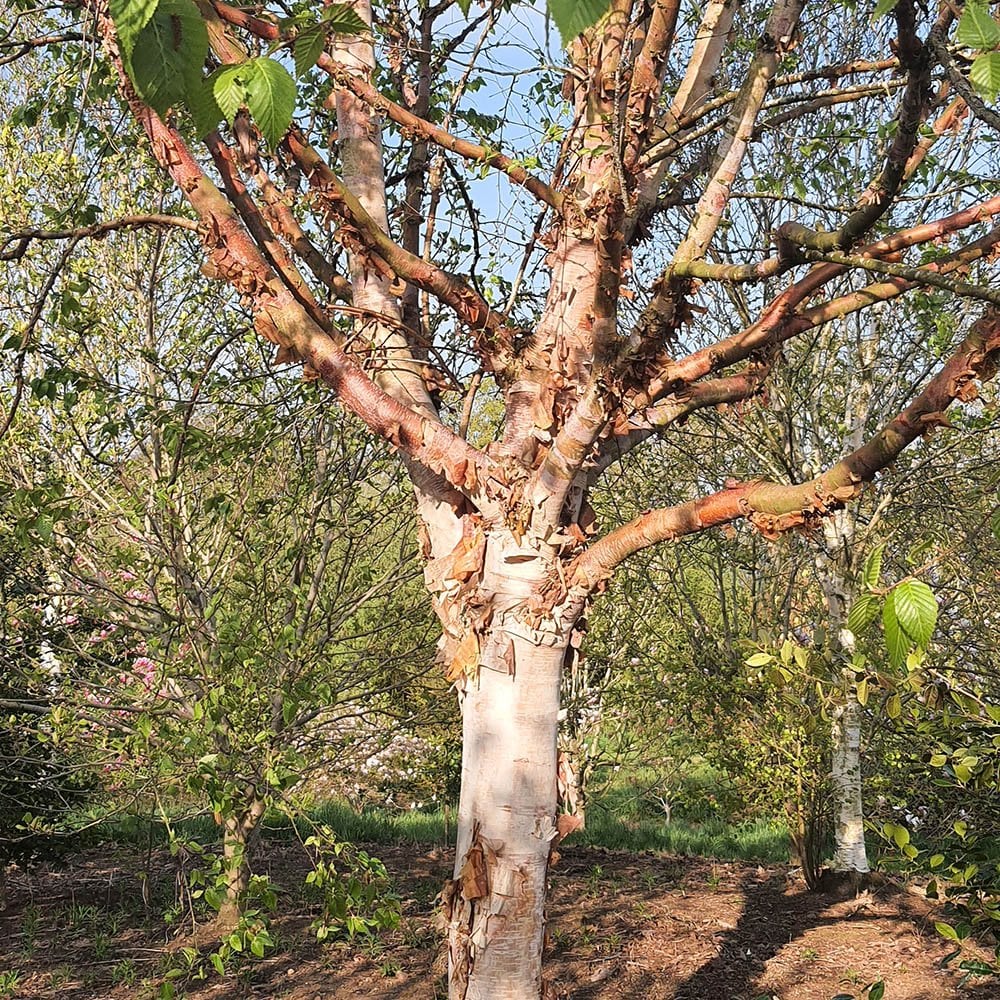Betula albosinensis 'Kansu' Tree
Betula albosinensis 'Kansu' Tree
Chinese Red Bark Birch Trees
Single stem tree, 150-200cm, 12L pot
Despatched within 2-4 weeks



Key features






Description
Betula albosinensis 'Kansu' has beautiful pink, orange and copper peeling bark. Underneath, the fresh bark is creamy white, creating a stunning contrast. Catkins in spring are followed by green deciduous leaves that create an airy canopy and turn soft yellow in autumn. In winter, the bark takes centre stage.
Known as a Chinese Red Birch, 'Kansu' will grow to a height and spread of 8 x 4 metres in 20 years. A hardy variety, Betula albosinensis 'Kansu' will cope with exposure to the elements, drought and damp sites.
AKA Betula utilis subsp. albosinensis 'Kansu', Chinese Red Birch 'Kansu'
| Small shrubs (1-3) | Young trees & 4+ small shrubs | Select semi-mature trees & shrubs (1-4) | All other mature trees (any quantity) | |
|---|---|---|---|---|
| Mainland UK ex. Scottish Highlands | £10 | £12 | £35 | from £55 |
| Scottish Highlands & the Islands | From £30 | |||
| Outside Mainland UK | Currently we are unable to deliver outside of Mainland UK | |||
Product Details
Key features






Description
Betula albosinensis 'Kansu' has beautiful pink, orange and copper peeling bark. Underneath, the fresh bark is creamy white, creating a stunning contrast. Catkins in spring are followed by green deciduous leaves that create an airy...
Betula albosinensis 'Kansu' has beautiful pink, orange and copper peeling bark. Underneath, the fresh bark is creamy white, creating a stunning contrast. Catkins in spring are followed by green deciduous leaves that create an airy canopy and turn soft yellow in autumn. In winter, the bark takes centre stage.
Known as a Chinese Red Birch, 'Kansu' will grow to a height and spread of 8 x 4 metres in 20 years. A hardy variety, Betula albosinensis 'Kansu' will cope with exposure to the elements, drought and damp sites.
AKA Betula utilis subsp. albosinensis 'Kansu', Chinese Red Birch 'Kansu'
Planting & Care
Delivery Information
| Small shrubs (1-3) | Young trees & 4+ small shrubs | Select semi-mature trees & shrubs (1-4) | All other mature trees (any quantity) | |
|---|---|---|---|---|
| Mainland UK ex. Scottish Highlands | £10 | £12 | £35 | from £55 |
| Scottish Highlands & the Islands | From £30 | |||
| Outside Mainland UK | Currently we are unable to deliver outside of Mainland UK | |||
MORE TO GROW YOUR GARDEN

















